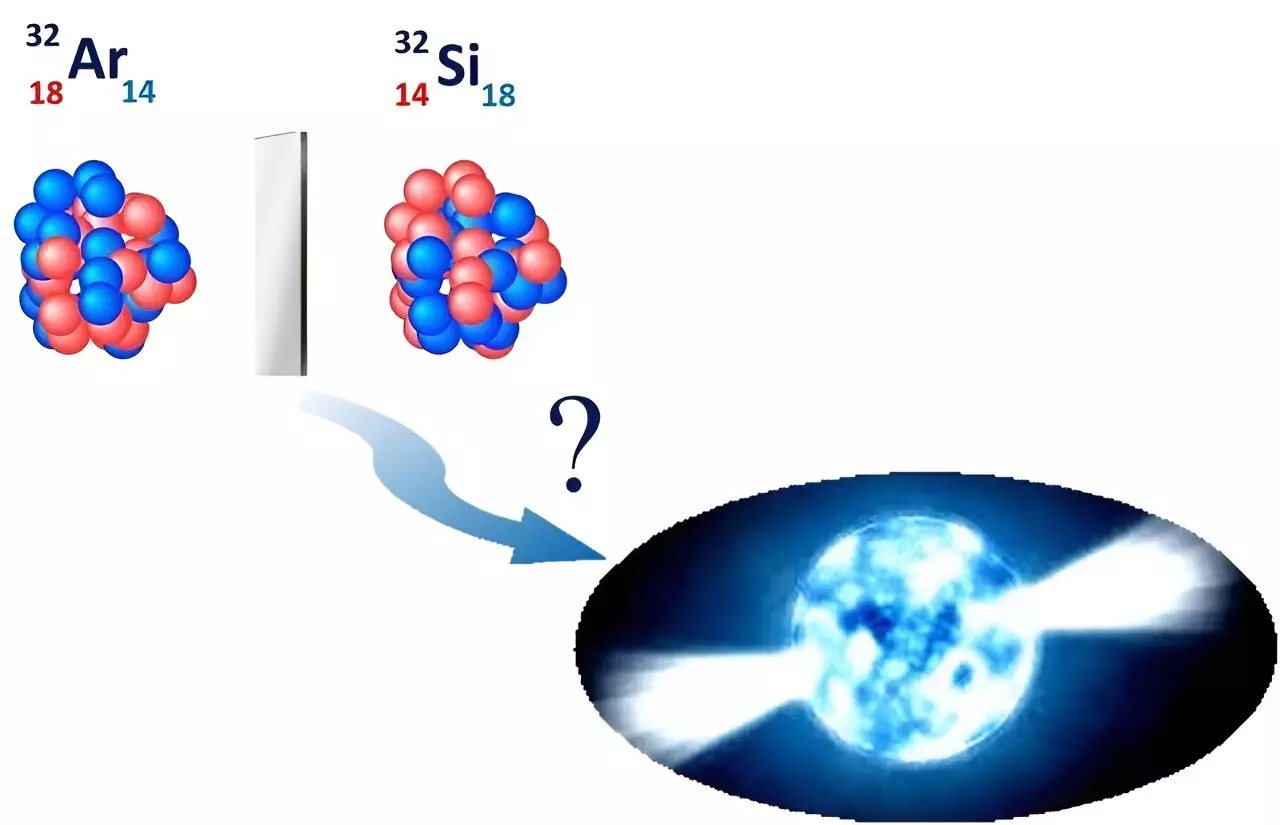One of the key factors in nuclear physics is the relationship between the size of an atomic nucleus and its energy levels. By adding or removing neutrons from a nucleus, scientists can observe changes in the size of the nucleus, leading to what is known as isotope shifts. These shifts in energy levels of the atom’s electrons can then be measured with precision, allowing for the determination of the radius of an isotope’s nucleus.
In a recent study, researchers focused on measuring the nuclear radii of stable silicon isotopes such as silicon-28, silicon-29, and silicon-30, as well as the unstable silicon-32 nucleus. By using laser-assisted techniques, they were able to gather crucial data on the size of these nuclei. The researchers also compared the silicon-32 nucleus to its mirror nucleus, argon-32, which helped in setting limits on variables that are essential for understanding astrophysical objects like neutron stars.
Despite advancements in nuclear theory, there are still significant challenges that scientists face. One major obstacle is the lack of a connection between the description of nuclear size and the underlying theory of the strong nuclear force. Additionally, there is uncertainty regarding whether theories that describe finite atomic nuclei can accurately depict nuclear matter, which consists of interacting protons and neutrons in extreme conditions like neutron stars.
To address these challenges, precision measurements of charge radii are crucial. The researchers in the study utilized laser spectroscopy measurements at the BEam COoler and LAser spectroscopy facility (BECOLA) at the Facility for Rare Isotope Beams (FRIB) at Michigan State University. These measurements not only provided essential data on the nuclear radius of silicon isotopes but also served as a benchmark for the development of nuclear theory.
The differences in charge radii between the silicon-32 nucleus and argon-32 were instrumental in constraining parameters needed to describe dense neutron matter within neutron stars. These findings align with constraints from gravitational wave observations and other observables, highlighting the importance of precision measurements in advancing our understanding of nuclear physics and astrophysical phenomena.


Leave a Reply